Deep Flavors: A Celebration of Recipes for Foodies in a Kosher Style, by Kenneth M. Horwitz, is a cookbook for anyone who can’t think of a single dinner idea. Don’t worry – Horwitz is here for you!
I was first drawn to this book by the subtitle. My fiancé is Jewish, and over the past six years, I’ve learned a lot about Jewish and kosher food (his family members all eagerly flipped through this book when I got it, and his mother exclaimed that the kugel recipe didn’t call for enough sugar – hers is a dessert version while his is savory).
But once I cracked open this book, I realized Horwitz has really written this cookbook for anyone’s daily use. He notes in Chapter 1 that the book is “kosher style” and that he’s not going to make note of any special rules of Passover. He includes many recipes that aren’t traditionally Jewish, such as quesadillas and risotto, so there really is something in here for everyone.
Horwitz also mentions that he wanted the book to thoroughly explain how to accomplish each recipe, so you won’t find just a list of ingredients and simple steps here. Each recipe includes an introduction at the least, while some recipes are entirely blocks of text (see Egg Salad on page 124 for several variants on the dish rather than one recipe). The book feels like my future father-in-law wrote a few recipes down for me, and since Horwitz said he wrote this for his kids, that makes perfect sense.
I decided to make at least two recipes from the book before writing my review (and I intend to make many more). There were plenty of options for me to choose from. Horwitz begins by covering a few essentials, like sauces and spices. The next twelve chapters cover everything from breakfast to soups to pickles to non-Jewish vegetarian options. The last chapter on desserts is split into six categories itself!
I chose to make Refried Beans (page 262) and Hamantaschen (page 175). Horwitz begins his refried beans recipe by lamenting the bland and mushy beans people are always served at Mexican restaurants and claims that his recipe is anything but bland. I can attest to this since, as I looked over the recipe, I realized this is almost exactly how I make my beans! Horwitz calls for a few additional ingredients that I don’t typically use (ancho chile powder and dried guajillo chiles), so I ended up leaving those out like usual. I absolutely recommend this recipe and can tell you that these beans are insanely good in a burrito.
The hamantaschen were more of a challenge for me. Hamantaschen are triangle-shaped cookies that are typically made during Purim, which celebrates the victory of the Jewish Queen Esther over the evil Haman. Purim was March 9 to 10 this year, so I made them just a few days late. I have made hamantaschen in the past and found it to be somewhat difficult. The ones I made before were tough to shape and didn’t taste good enough to be worth the effort.
Horwitz’s hamantaschen recipe is quite different. His calls for a yeast dough, which is unusual. I make a fair amount of bread, so it wasn’t too difficult for me to know what the dough was meant to look like, but if you aren’t too familiar with yeast dough, you could be intimidated. Because it is a yeast dough, you have to let it rise for two hours before you can proceed, so make sure you have plenty of time before you start this recipe.
Horwitz includes a recipe for the honey-nut filling that he and his family prefer over the traditional poppy-seed filling, so I chose to make that one for my hamantaschen. The sweet citrus dough is paired with a filling of honey, raisins, apples, and jam. Here’s what the dough looked like before proofing for two hours and after.
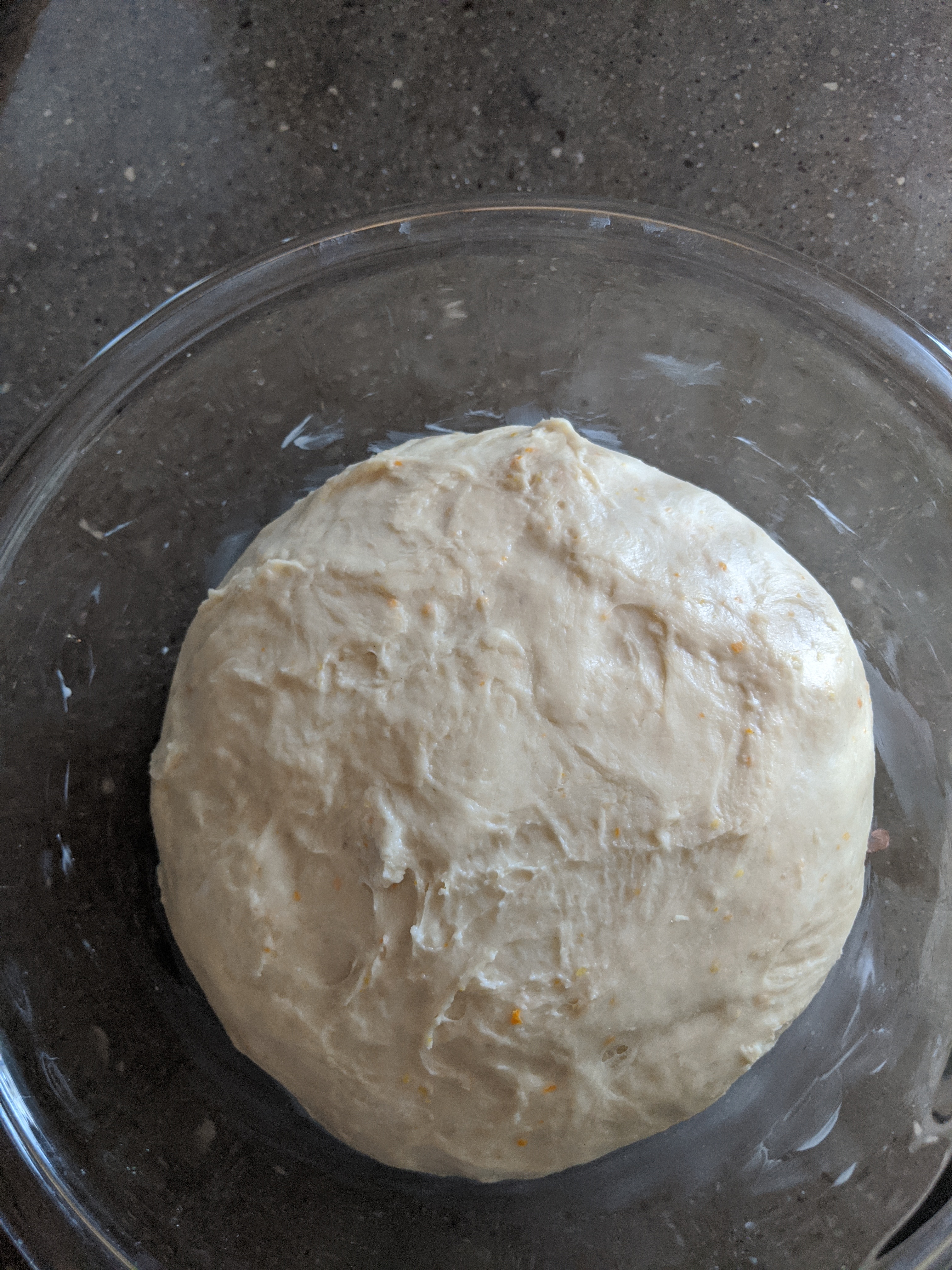
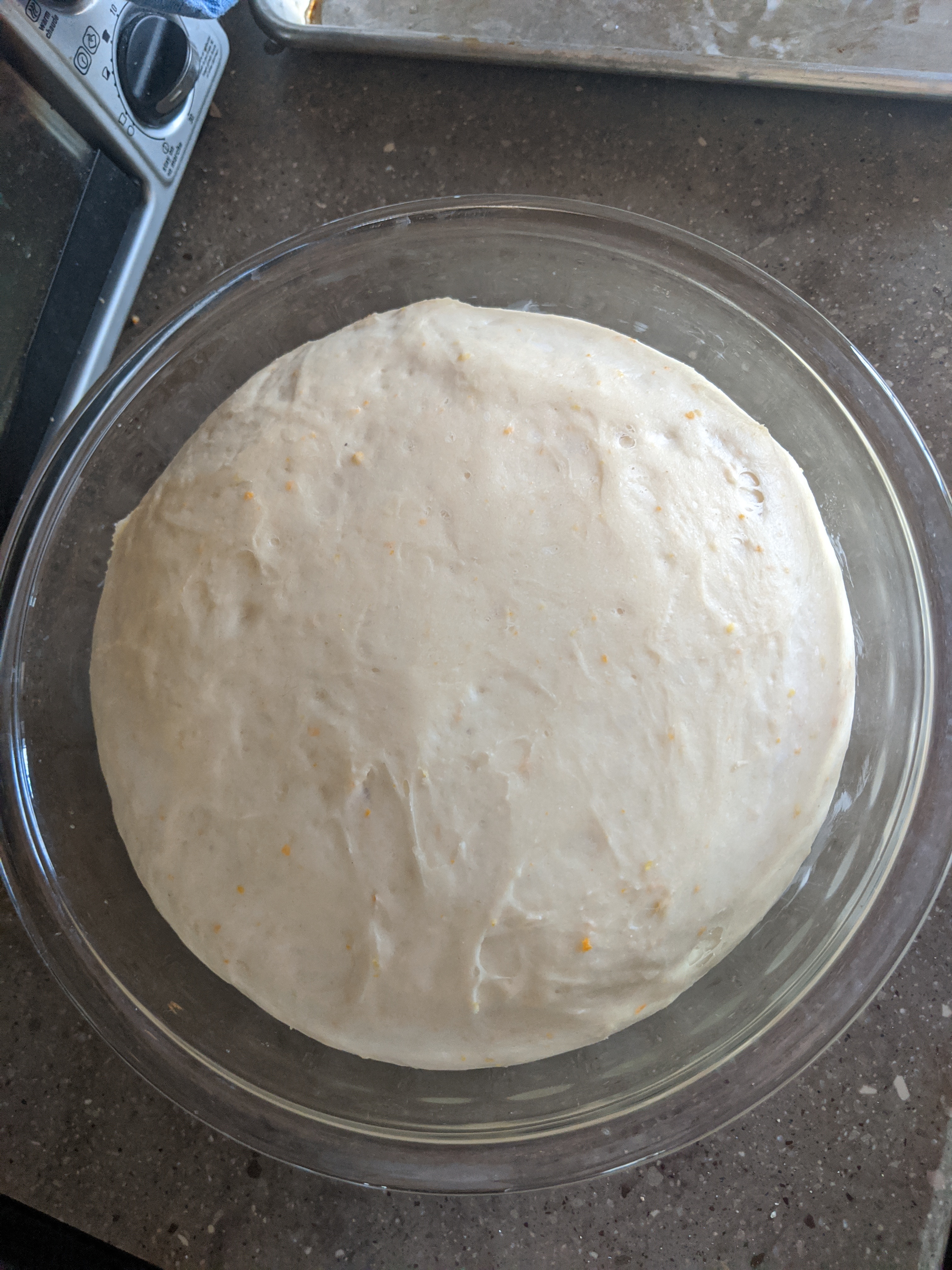
You’re then instructed to punch down the dough and roll it out to 1/8″ thickness. I’ve been talking a big game up until now, so let me start to explain to you my failings at this point. We ran out of all-purpose flour a few weeks ago, but since we make a lot of bread, we still had spelt, whole wheat (several types), and bread flour. I went with the bread flour, which probably contributed to my inability to roll the dough as thinly as instructed. My hamantaschen are way larger than they are meant to be!
I am also quite impatient and like to do things the simplest way possible, which resulted in some lazy shapes. My fiancé floated into the kitchen, shaped one, and then promptly left. Guess which one is his.
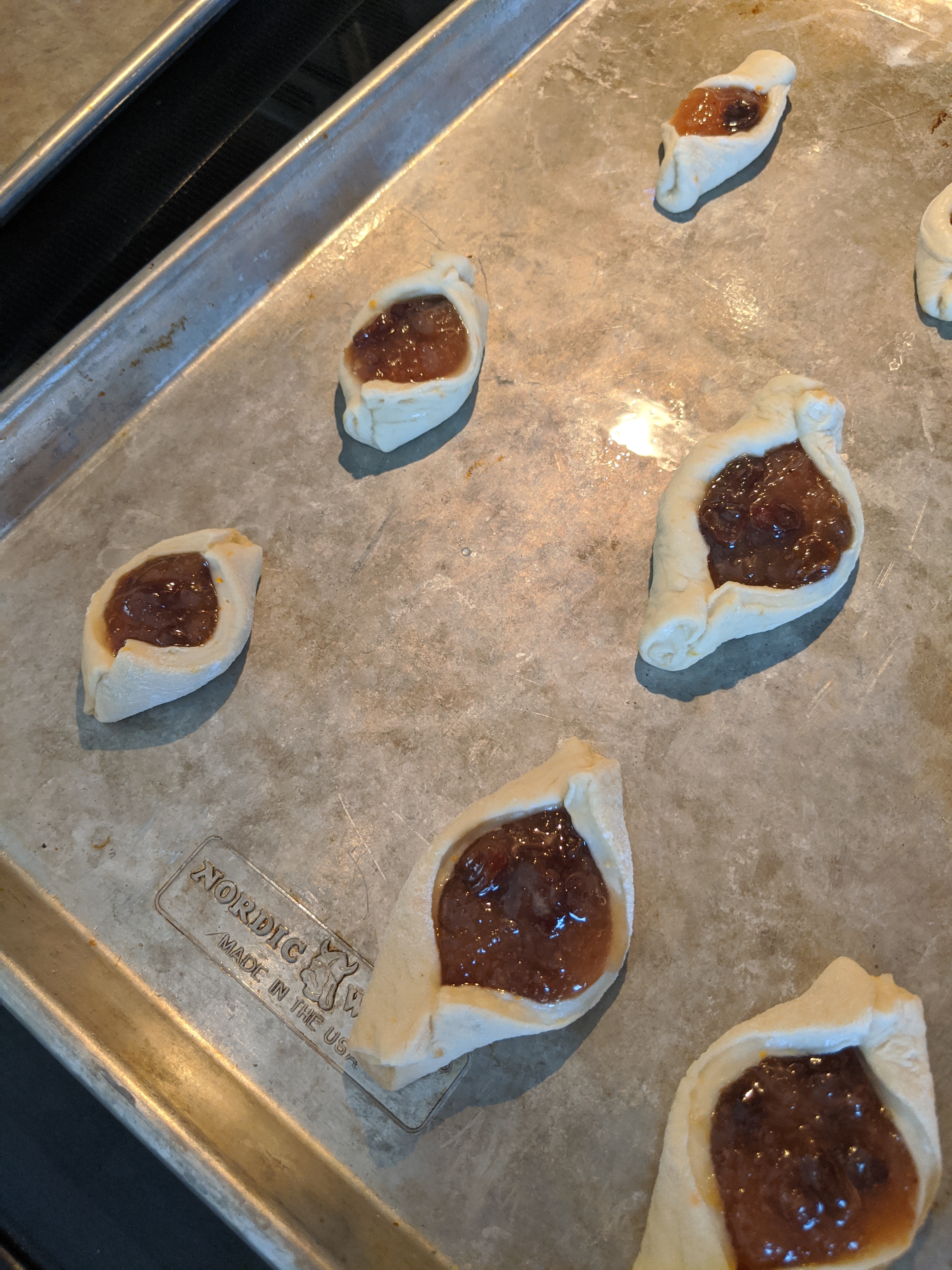
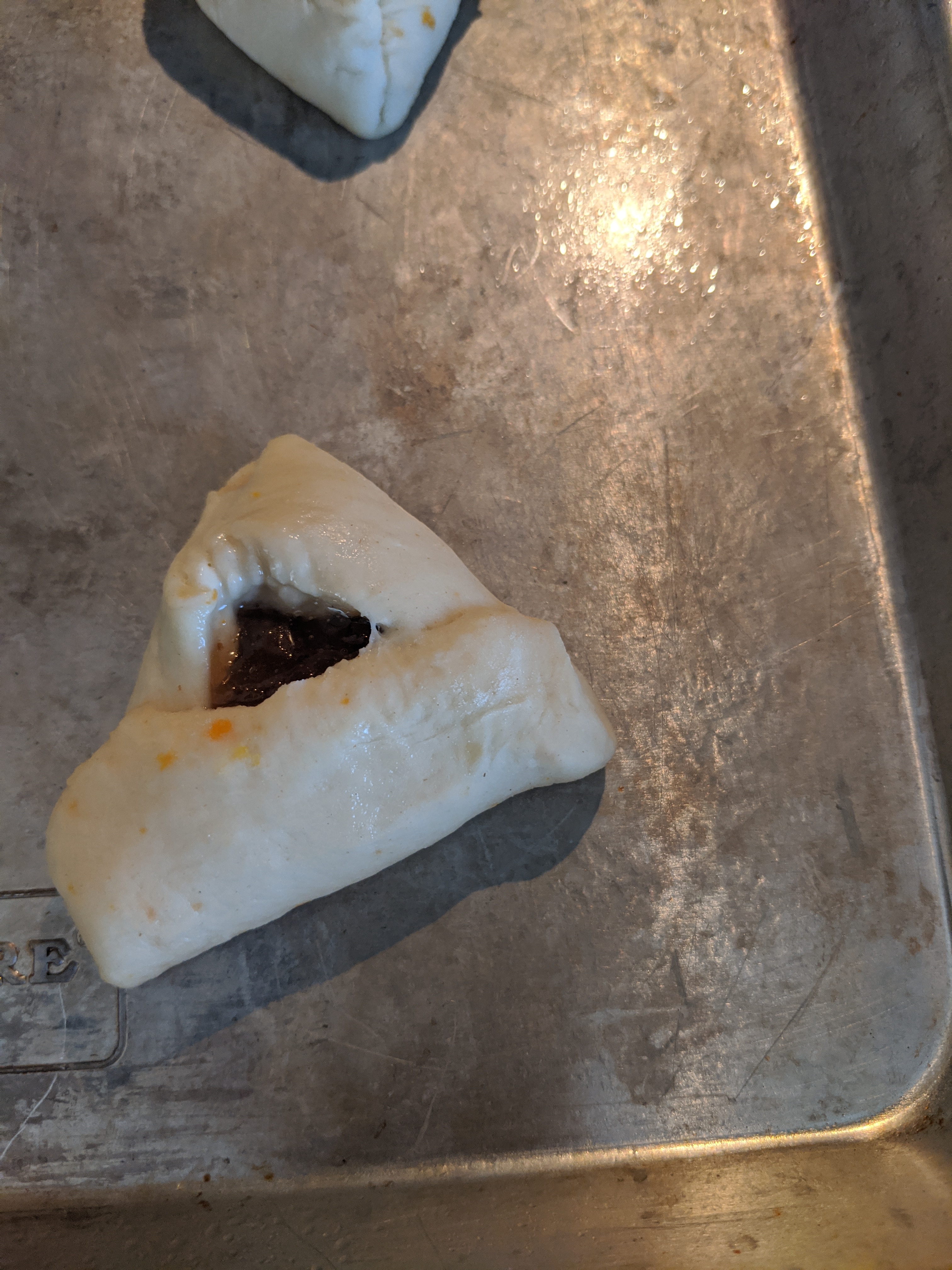
The cookies then rested for another 30 minutes before cooking for 20. Right before cooking, you brush them with an egg glaze. Here I must confess another failing of mine: I’m vegan. The dough called for milk, butter, and eggs. I used coconut milk, vegan butter, and an egg replacement. I’m no expert, so these ingredients also might have contributed to my struggle rolling out the dough, but I’ll blame the flour since I only ever bake vegan. Anyway, I brushed the hamantaschen with an egg replacement glaze before putting them in the oven, which led to a much darker color than you would expect. Take a look!
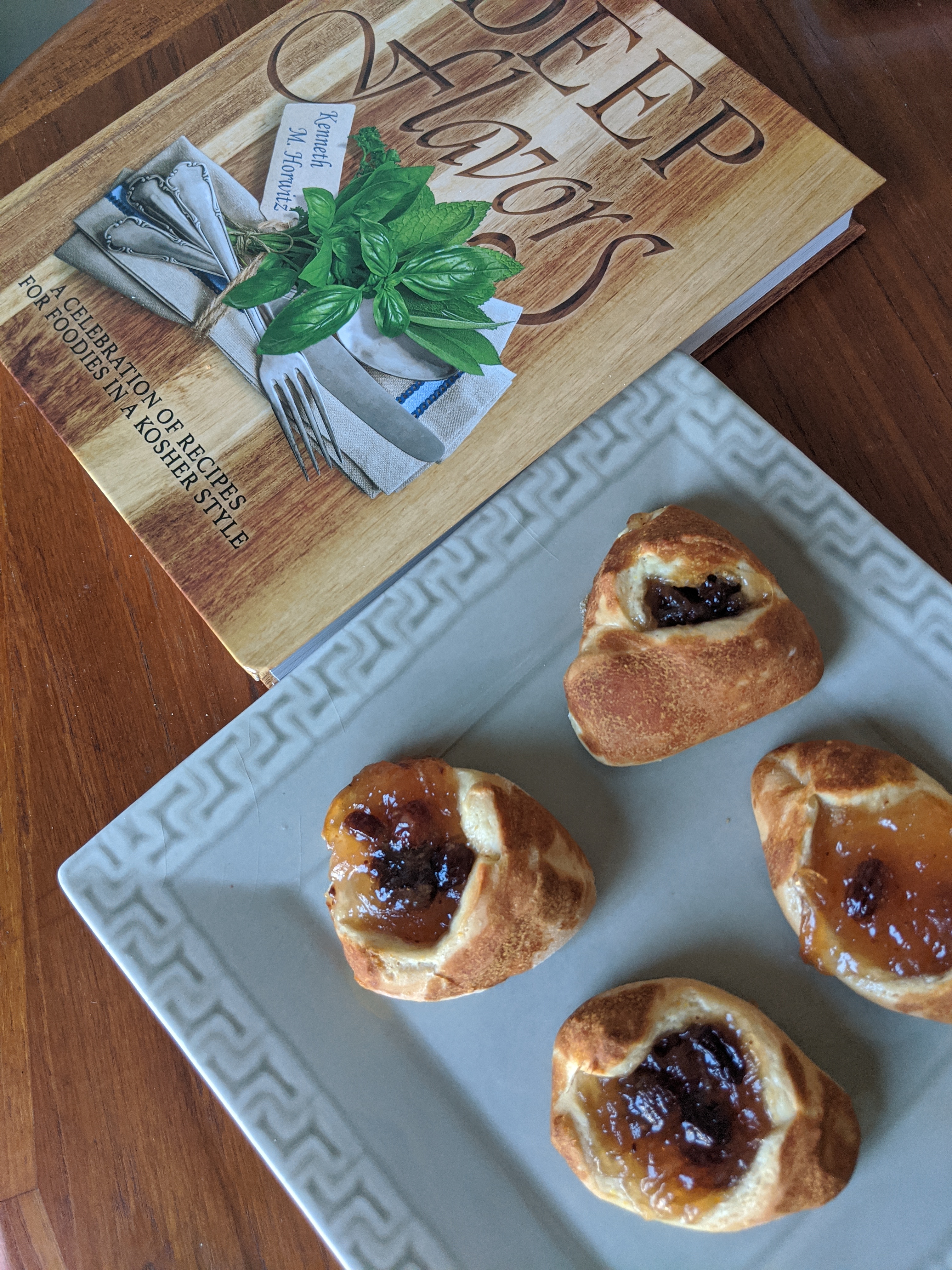
Not being able to roll the dough as small as I should have made the cookies huge, so naturally, the filling seeped out and the shapes didn’t stay intact. BUT these tasted so insanely good, and I am not a picky person. I hardly care what they look like. The deep flavors (get it?) are enough to inspire me to tackle this recipe again in the future, especially considering that I ate at least four of them immediately.
Horwitz might object to the changes I made, but unlike a few people he mentions at the beginning of the book, I don’t blame the recipe when my dishes go wrong. Also, how could I complain when the mistakes are so delicious?
Overall, Horwitz has a lot to offer in this book, whether you’re interested in traditionally Jewish food or not. You’ll appreciate the detail and the variety of recipes. I’m thrilled to add this to my cookbook collection.
A copy of Deep Flavors was provided by Inspire On Purpose Book Publishing.




